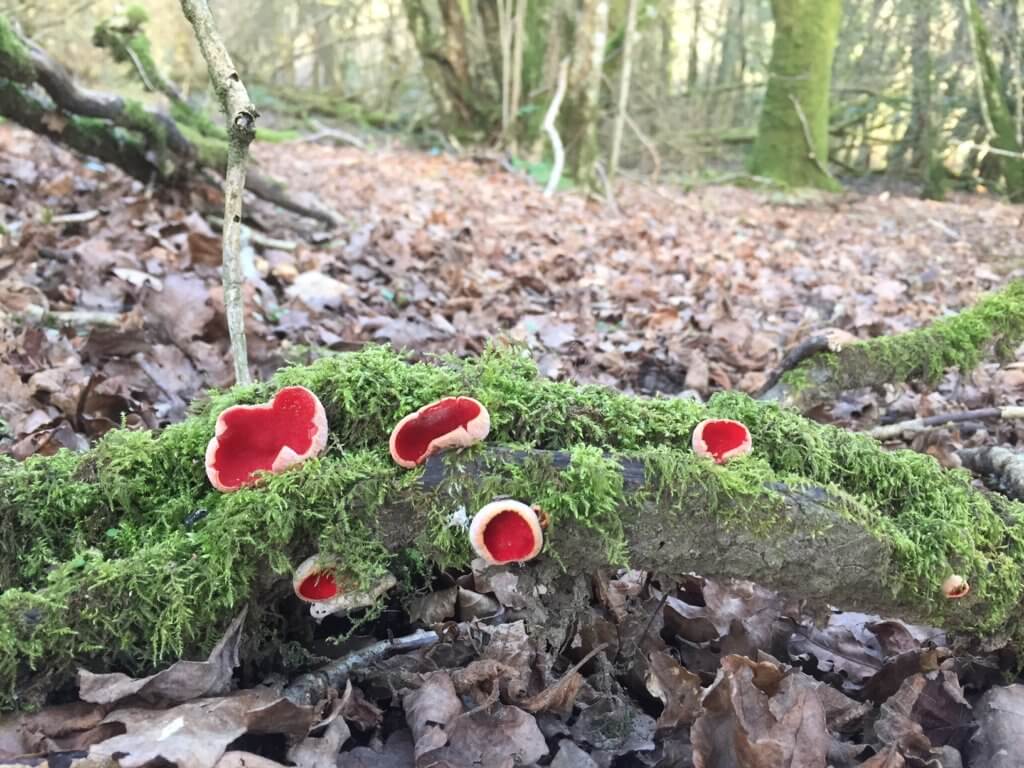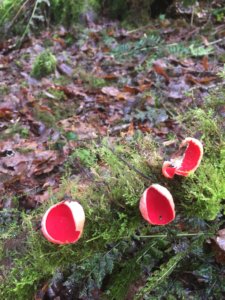
These are, admittedly, towards the gimmicky end of the wild food spectrum but they are indeed edible (despite what some older books say) and they are so startlingly attractive that I think they deserve a mention. And, actually, they don’t taste too bad at all if cooked for long enough to soften them up a little. They have a major advantage in that they appear during the coldest months of the year, adding vivid splashes of colour to the largely monochrome landscape and brightening up the leanest period for foragers.
 They are very frequent in this part of Devon and, generally, they tend to be most common on the damper, western side of the country. They often root to dead and decaying wood and are usually found in little clusters or even in a line, mapping the presence of a fallen branch, hidden in the leaf litter below. I also find them growing on living moss-covered grey willow branches near to the ground – the red fungi and bright green moss making for quite a contrast.
They are very frequent in this part of Devon and, generally, they tend to be most common on the damper, western side of the country. They often root to dead and decaying wood and are usually found in little clusters or even in a line, mapping the presence of a fallen branch, hidden in the leaf litter below. I also find them growing on living moss-covered grey willow branches near to the ground – the red fungi and bright green moss making for quite a contrast.
They look fantastic in the wild and I’m reluctant to pick more than a handful very occasionally. But they do also work their magic on the dinner plate. A quick online image-search reveals all sorts of clever concoctions involving other food items, imaginatively arranged within the bright red cups. If you are interested in fungi as food you should probably eat them at least once. But, after that, maybe they are best left alone to grace the woodland floor.
[registration_form]
Lovely, we have these in the local wildlife trust reserve where I volunteer. They really add a spot of colour. Never thought about eating them though.